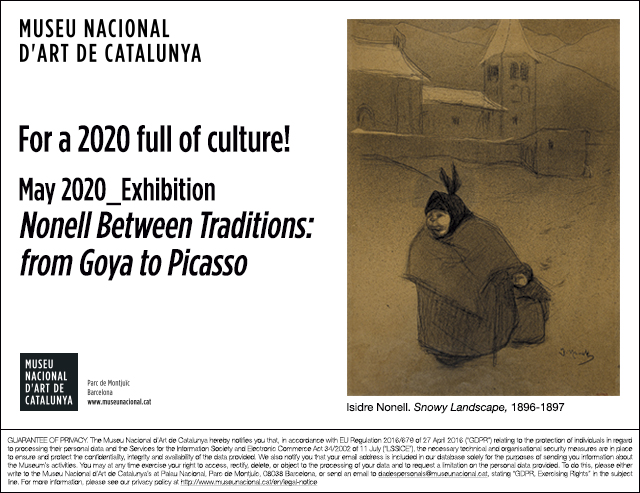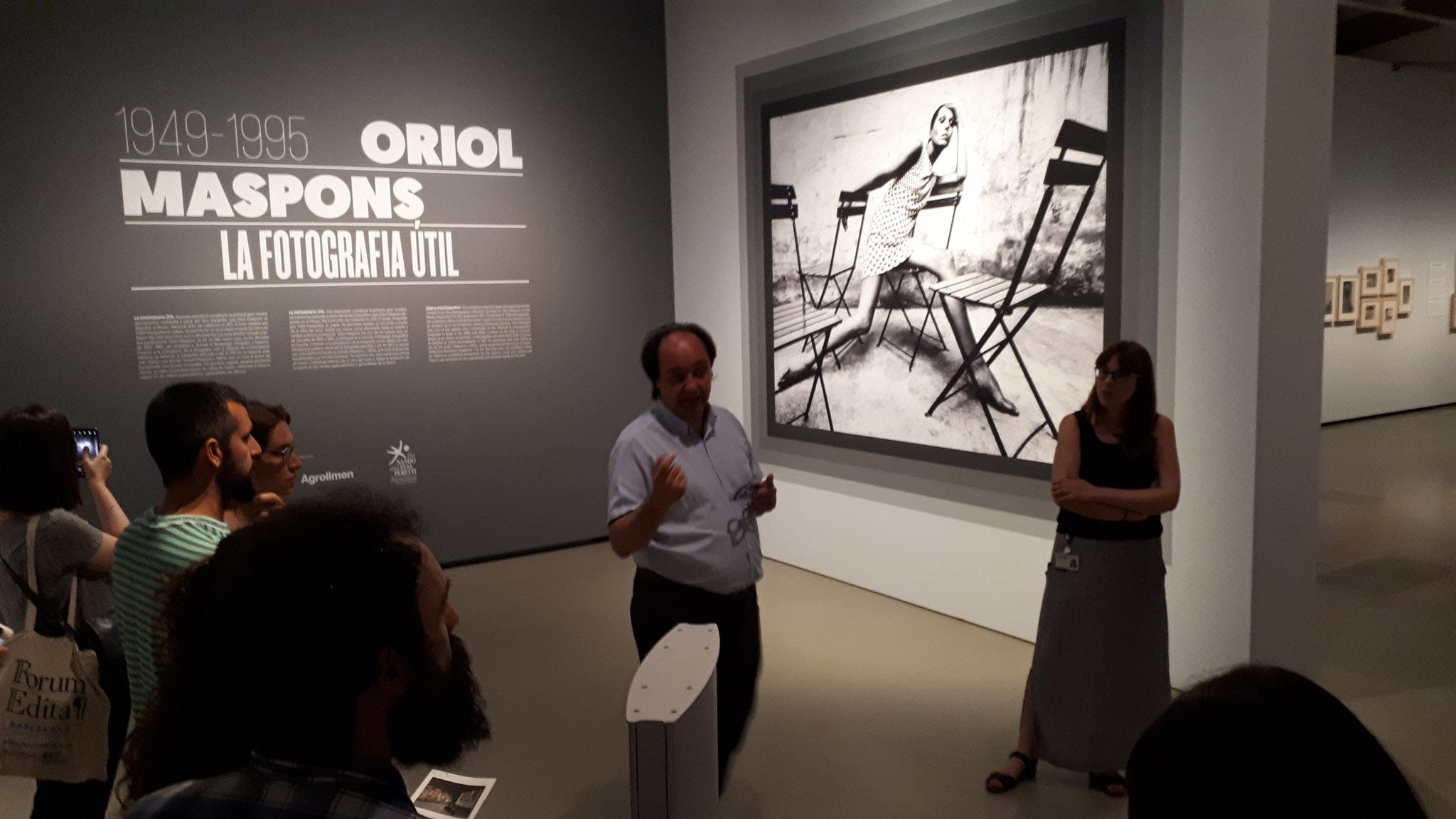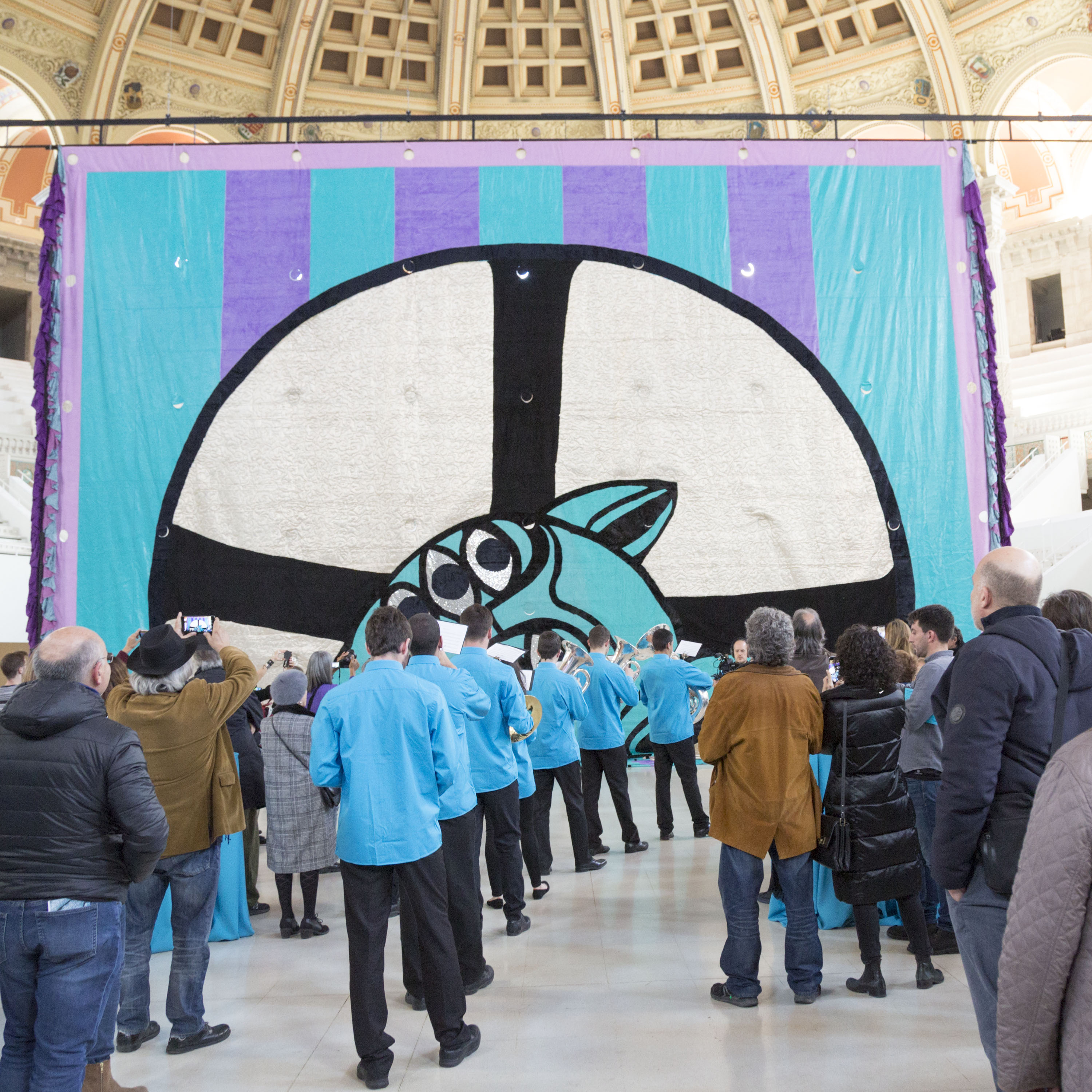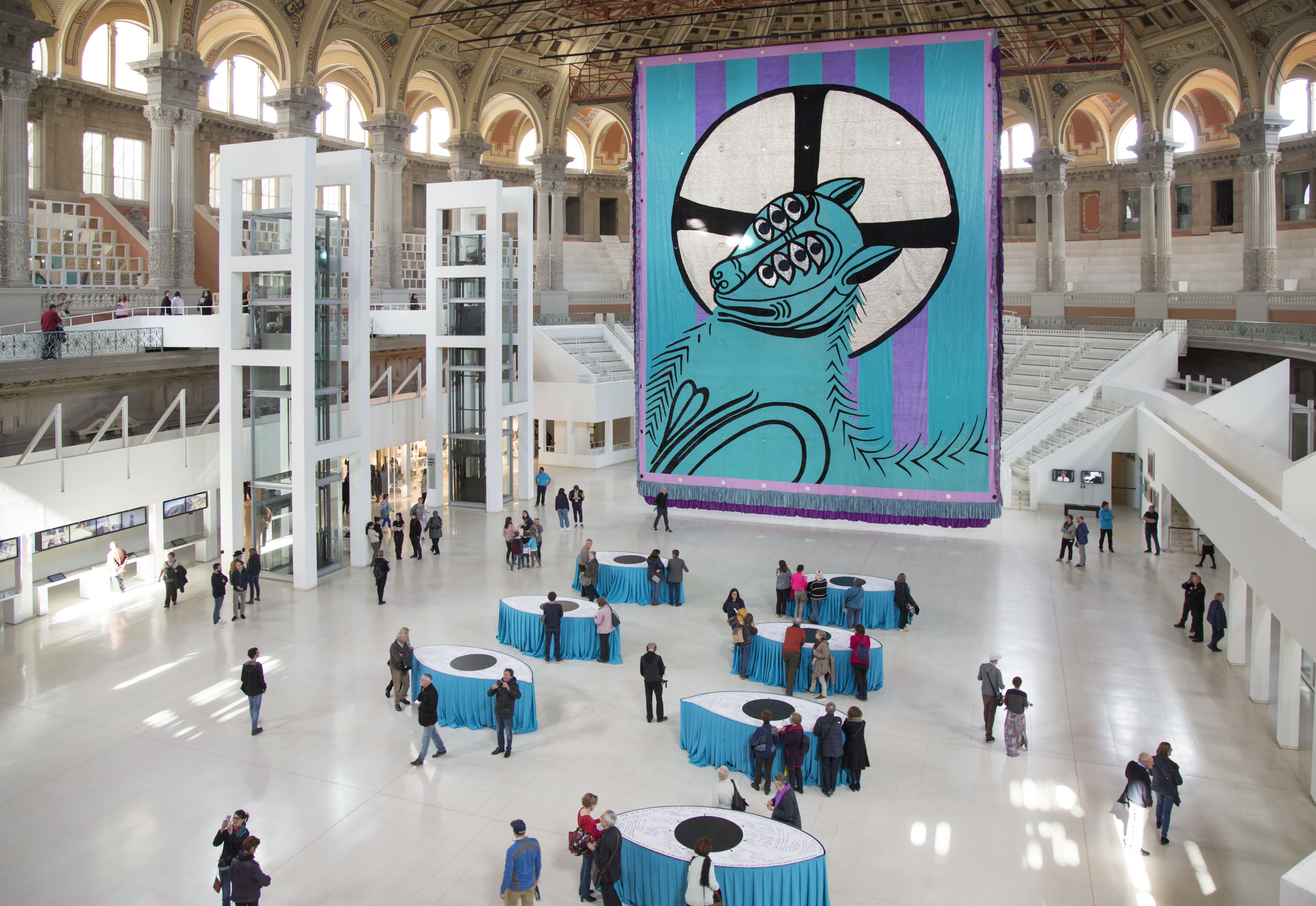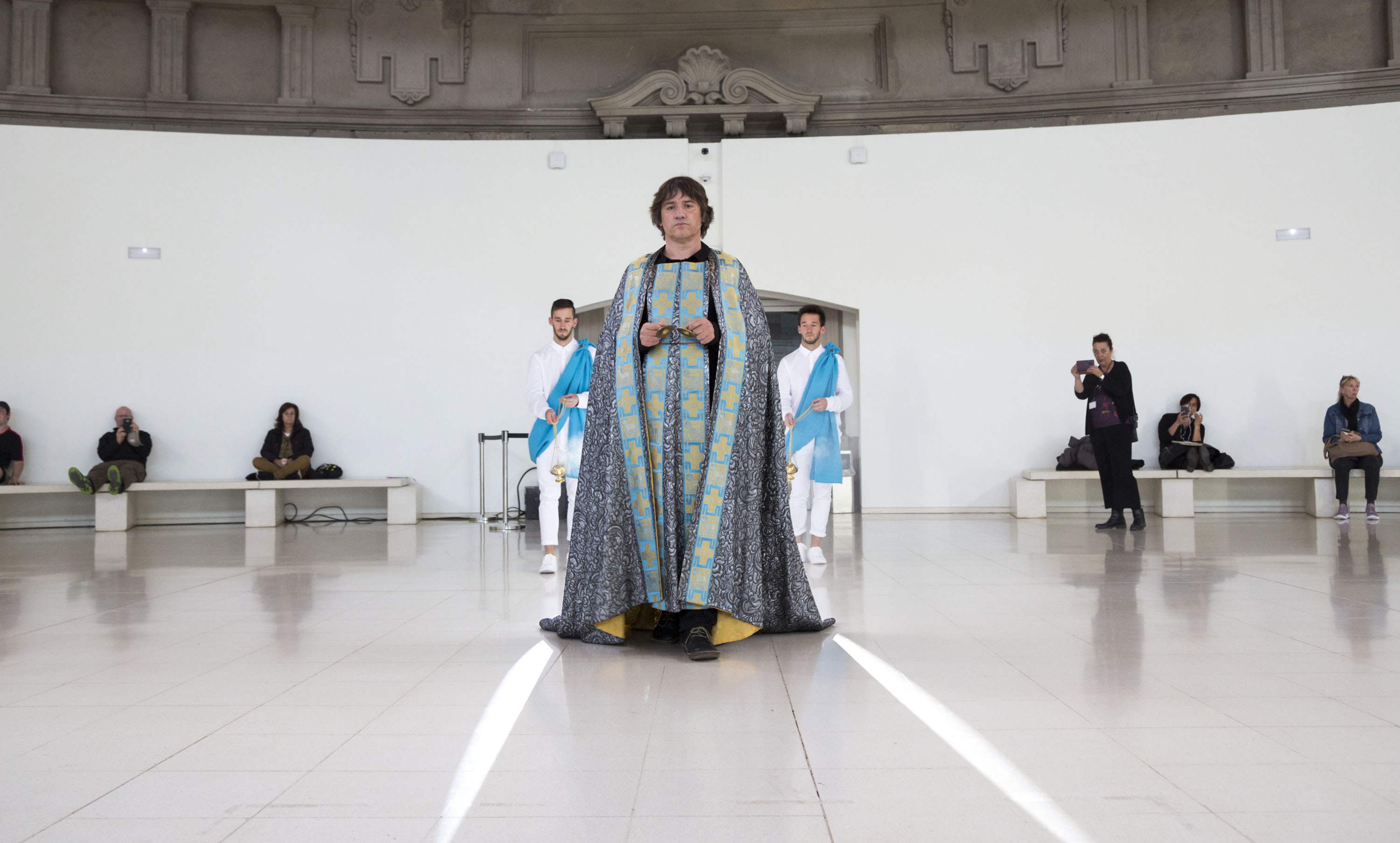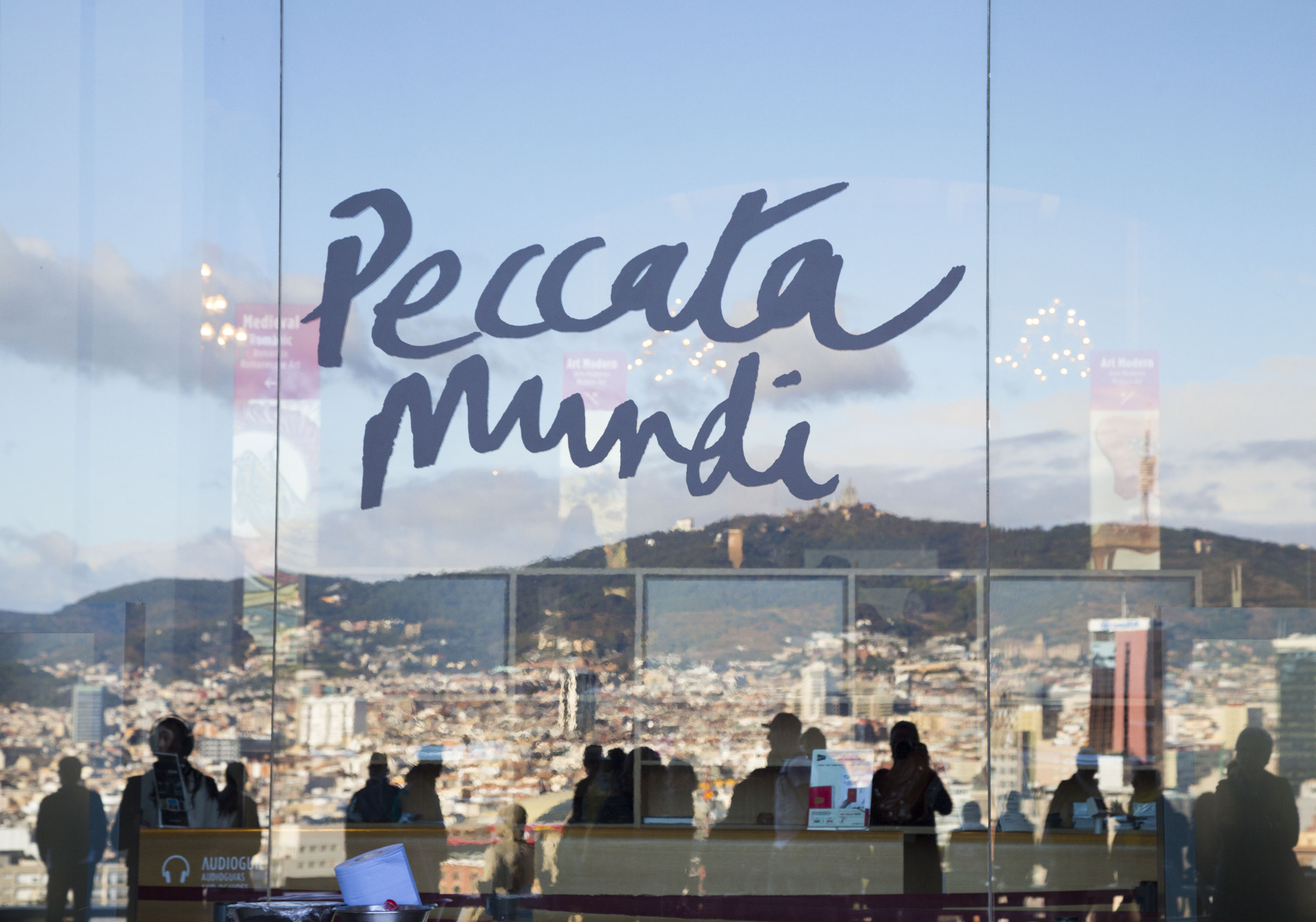Visual summary
Yet another year, we present a visual tour of everything that has happened in terms of the museum’s activity during 2019.
With the presentation of the Strategy and Action plan 2019-2022/2032, the museum has reaffirmed its commitment with strategic planning as a central work tool. This framework document, approved by the governing organs of the Museu Nacional, defines the five major axes of action for the forthcoming years: the social dimension; the new storytelling, the growth and diffusion of the collection; the knowledge, education and experiences; the relevance and projection, and the governance, organisation and financing.
With this way mapped out towards the social museum, new visions have been represented as well as new storytelling with various actors, so as to continue rethinking and renovating the museum in a continual way, and as such to tackle and provide responses to the challenges posed by a globalised world that is constantly evolving.
New visions, new storytelling
The temporary exhibitions, the interventions in the rooms or the new visions based around the collection have been one of the central elements of the programming for this year of 2019.
LIBERXINA, Pop and New Artistic Behaviour. A window for the Catalan artistic proposals from between 1966 and 1971, the emergence of pop art and new figuration, by highlighting the connection with international modernity linked to new paradigms of freedom and revolution. The exhibition has been curated by Álex Mitrani and Imma Prieto.
Bermejo, the 15th century rebel genius. Organised jointly between the Museu Nacional and the Museo del Prado, with the collaboration of the Fundació Banc de Sabadell and curated by Joan Molina, this monographic exhibition renews the look about this exceptional painter, a genius with a difficult personality, a rebel artist aware of his talent. Bermejo was creator of his own language marked both by the originality when tackling religious topics as well as for the groundbreaking compositions.






Oriol Maspons. The useful photography / 1949- 1995. The museum has organised a major retrospective exhibition about the Barcelona photographer Oriol Maspons, curated by Cristina Zelich. A tour of more than four decades of intense activity in the fields of reportage, portrait, fashion and advertising.







Antoni Fabrés. The modern art rooms have hosted an extensive representation of the work of the sculptor and painter, with the aim of recovering his legacy. Aitor Quiney was the curator of the exhibition.









Thanks to the collaboration between the museum and FICOMIC, we have been able to see three exhibitions in the line that the museum has been working on since 2014 in order to patrimonialize and give visibility to the comic, an artistic genre that has entered the museum rooms to stay: El Víbora. Comix counter cultural, Osamu Tezuka, the God of Manga and The new adventures of the Corto Maltés.









Habitación. The Archivo F.X., psychotechnical Chekas by Laurencic and the function of art. In the rooms dedicated to the Civil War, in the collection of modern art, the works of Archive F. X. have been exhibited around the so-called psychotechnical chekas by Alphonse Laurencic.
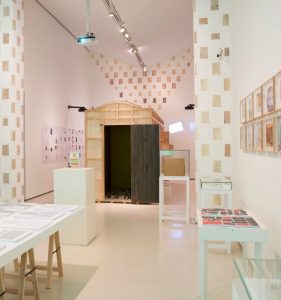
Guided visists in terms of gender, Rebellious views: readings from the collection from an LGBTI viewpoint, A different management of pain and the meetings with prescribers (instagrammers, tweeters, bloggers) around the exhibitions of the museum we have witnessed new ways of looking at and working with the collection, always with the idea that new audiences who, until now, may have thought the museum was foreign to them, feel like more close to.
RE POST modernisms. The students of the Joso School have presented a series of works based on the re-reading of some works from the present, playing with the idea of the parallelism between the artists who reinterpret and they themselves, in dialogue with the collection of Modern Art of the Museu Nacional.


Pneumothorax. A perforation in the lung-archive of the Museu Nacional. A proposal of the artist and educator Jordi Ferreiro about the relation that education has with the museum based on the documentation stored in our archive.


#thecollectiongrows
Thanks to an agreement with the Fundació de la Junta de la Sagrada Família, a set of items from Casa Milà has been deposited in the museum designed by Antoni Gaudí and renews the existing deposit and exhibition agreements for ten years, reinforcing the role of the museum as a reference centre for discovering the artistic creations of the modernist architect.
In the rooms of the modern art collection, you can see the exhibition Knotting the space. Aurèlia Muñoz Donation, which allows us to grasp the quality and diversity of the work carried out by the artist during the years of birth of the contemporary textile language on the occasion of the incorporation of a collection of textile works and on paper by Aurèlia Muñoz.



#themuseumaroundtheworld
Yet another year, the museum has participated in national and international exhibitions with loans of different works. This is the case of Blue, the colour of Modernsim, a joint production between the Museu Nacional and the Musées d’Art et d’Histoire de la Ville de Genève, held in the Caixaforum Sevilla.
Blue Courtyard, Santiago Rusiñol, 1913. Temple to the nymphs, Joaquim Torres-García, around 1901-1911
About 60 of the museum’s works have been displayed in five museums and art galleries in Japan on the occasion of the exhibition The city of artistic miracles about the Barcelona of modernism, in which the museum has actively collaborated.


We have also loaned 10 works of the collection of the museum to the Parlament de Catalunya to be exhibited in the spaces of the palace that can be visited.



The Landing Stage, Santiago Rusiñol, 1911. Meditation, Josep Clarà, 1929-1930. The dock, Alexandre Coll, 1935.
On the occasion of the exhibition that the Museu dels Sants d’Olot dedicated to the sculptor Ramon Amadeu, the museum has enlarged its deposit with four figures by the artist.




Saint Bruno, (1776), Saint John Apostle at the foot of the Cross (around 1809-1821), Saint Agatha (around 1809-1821) and Saint Peter Nolasco (around 1809-1821).
Conservation, restoration and research
The works for the loans, the deposits and the temporary exhibitions have filled the workshops with the various specialties. The research and restoration work carried out by the Museu Nacional for the exhibition Antoni Fabrés has allowed unpublished aspects of his work to be discovered which can be enjoyed in all its dimensions. Work has been done extensively on drawings, paintings on canvas and cardboard, the sculptures and graphic material that are part of the museum’s collection and its Library, and 105 of the exhibited works have been restored.

The museum’s restoration team is working on the work White desert, by Antoni Fabrés, 1901.
The Numismatic Cabinet of Catalonia has had an intense activity with the organization of XXIX Seminar of currency history of the Crown of Aragon. The two faces of the Emperor. Charles V on the coin and the medal and the XXII Course of history of Hispanic currency: the currency of the Civil War: art design and propaganda.


As a new feature, the Museum’s Research Centre has begun publishing Art archives and has promoted the topic guides produced by the Library Joaquim Folch i Torres. Both initiatives have been well received and are the beginning of a great task ahead of us: to highlight the value of the collection of the Archive and the Library of the Museu Nacional.


Connecting with audiences
The museum has hosted the performance ceremony of Miralda Peccata mundi and could again see hanging in the Sala Oval the tapestry-bed cover of the Lamb of the Apocolypse thirty years later.
White Bouncy Castle. The Sala Oval has also hosted the installation, a choreographic object designed by dancers and choreographers William Forsythe and Dana Caspersen.
We would like to highlight the variety of activities that have been carried out during this year, aimed at the family public: Què està passant aquí? Converses en família, Voliaines, Celebracions o Barcelona Dibuixa. . The cycles of cinema, theatre and concerts: Música per emmarcar, Cicle per Amor a les Arts, 7è Art: Cinema al museu, Projecte Bellesa. La teva bellesa. And other activities that the museum has participated in such as 48 hores open house, MASBEDO. Festival Loop or Batman Day.






13th edition of Building in the Hall. Architecture workshop for children.
Accessibility, inclusion and sustainability
For the fifth year, we have held the Approach Culture Week with the aim of making art available to everyone, this year dedicated to the group of women in vulnerable situations within the programme Art and Health organized between the museum and the Psychiatry Service of the Vall d’Hebron University Hospital.
In its commitment to the environment, the museum has participated in the IV Energy-saving Marathon in the fight against energy poverty. In this line, the museum has received the distinction “Commitment for sustainable tourism Barcelona #Biosphere“.


Social responsibility. With the aim of making one of the main pillars of the Action and Strategy Plan effective, the # accessibility has become a transversal element of the museum’s activity. In this regard, we emphasize the inclusion of easy reading courses in staff training. We have also continued with the courses focused on the well-being of workers with the School of affective communication, Mindfulness and Yoga.


Digital media
This 2019 the museum has boosted the online publication of the collection’s works and their images in order to make them accessible. This year, the number of registrations of the online collection has increased by 26.5%, making, among other things, complete catalogues accessible of artists, such as that of Antoni Fabrés, the one of Isidre Nonell and of Adolphe Hedwige Alphonse Delamare, amongst others.
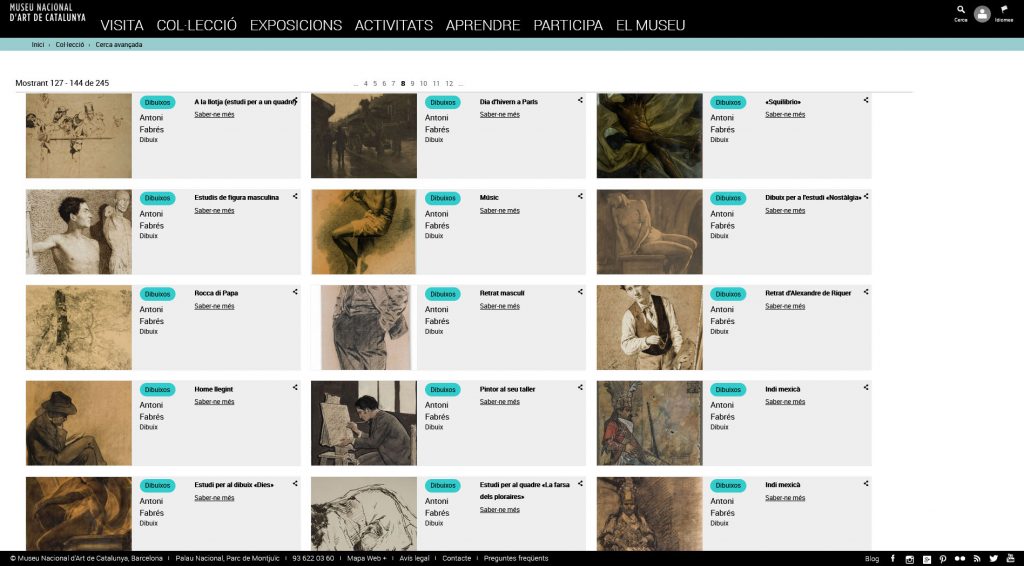
Maspons Digitization. On the occasion of the retrospective exhibition on Oriol Maspons, the museum has completed the digitization of the archive of the photographer’s deposit, as well as the inventory and conservation work, thanks to the sponsorship of Agrolimen.




So that’s the visual summary of 2019. We take this opportunity to thank all of you, readers of this blog, museum visitors, participants in the activities, web users and followers and subscribers to the networks, for your interaction and we encourage you to continue to do so next year.
All the team of the museum wish you a very good 2020 full of culture!
